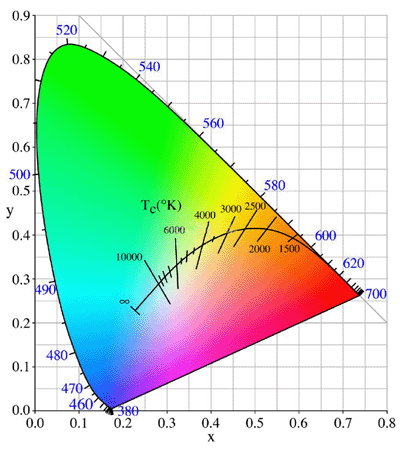Color temperature is a characteristic of visible light that has important applications in lighting, photography, videography, publishing, and other fields. The color temperature of a light sources is determined by comparing its chromaticity with that of an ideal black-body radiator. The temperature, usually measured in kelvins(K) at which the heated black-body radiator matches the color of the light source is that source’s color temperature, for a black body source, it is directly related to Planck’s law and Wien’s displacement law.
Counterintuitively, higher color temperatures (5000K or more) are “cold”(green-blue) colors, and lower color temperatures(2700-3500K) “warm”(yellow-red) colors.
|
Categorizing different lighting
|
|||||||||||||||||||||||||

